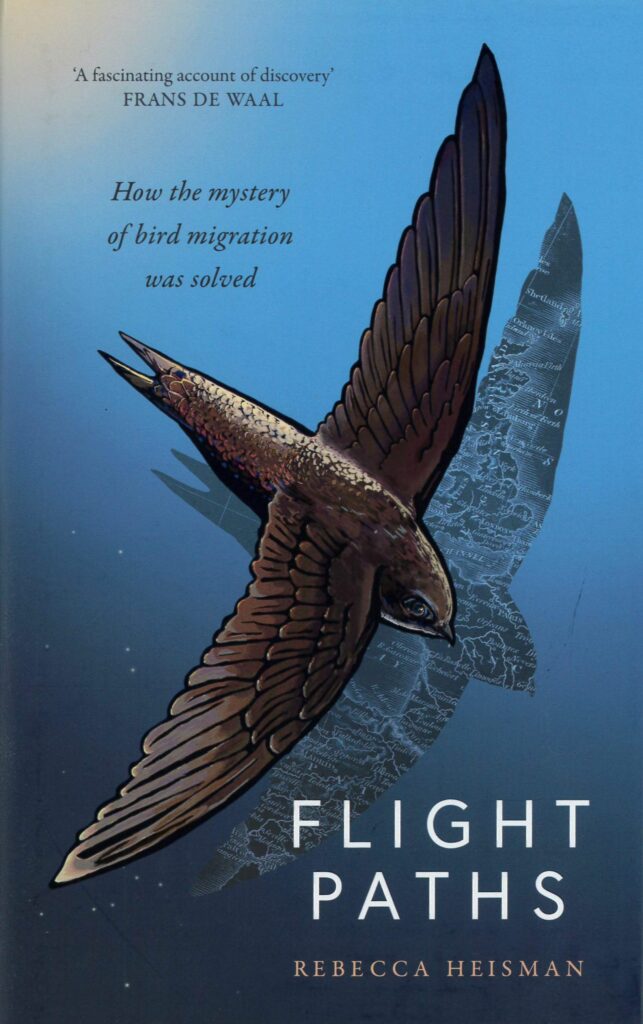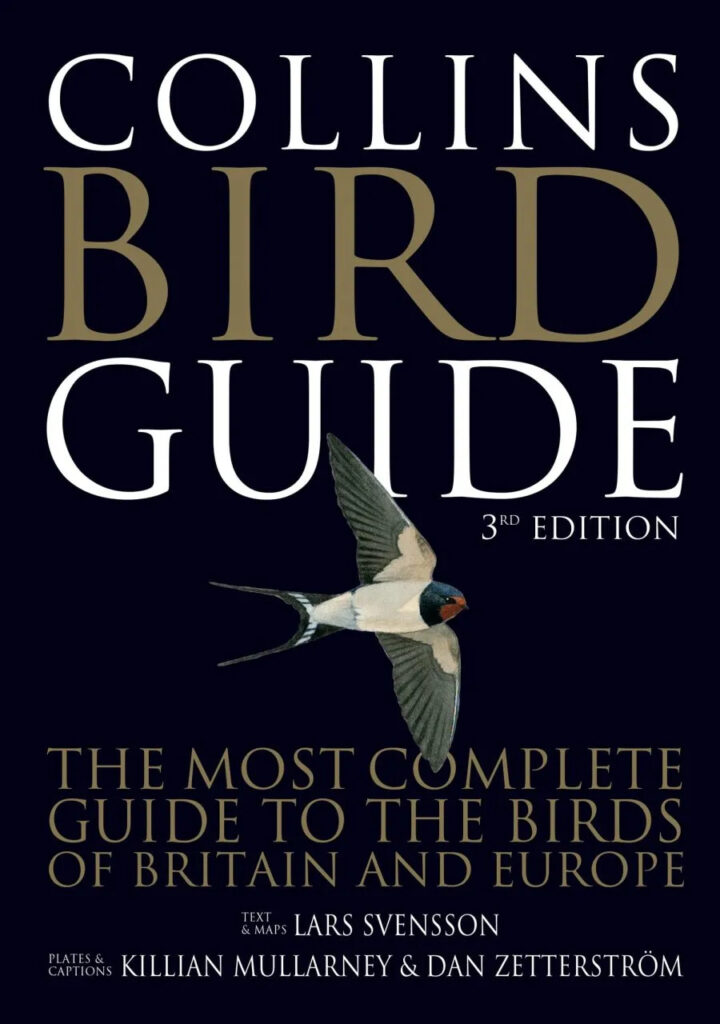Swifts, swallows and martins are migratory birds, spending the winters in Africa before flying around 3,400 miles to spend summer in the UK. While they are here they spend their days soaring high and feasting on the abundance of flying insects. Their arrival, for many of us, marks the end of winter and announces the arrival of spring and summer.
Although swifts, swallows and martins share some characteristics, they are, upon closer inspection, markedly different. They are roughly similar in size and shape, which can make them difficult to discern between, especially when flying high in the sky. However, as you begin to look closely at their appearance, flight, nesting behaviour and other key characteristics, it is relatively easy to distinguish between them.
Below we share our top tips for identifying swifts, swallows and martins. In this article we have focused on the below species as they are all common and widespread in the UK:
- Common swift (Apus apus)
- Barn swallow (Hirundo rustica)
- Common house martin (Delichon urbicum)
- Sand martin (Riparia riparia)
How to identify swifts
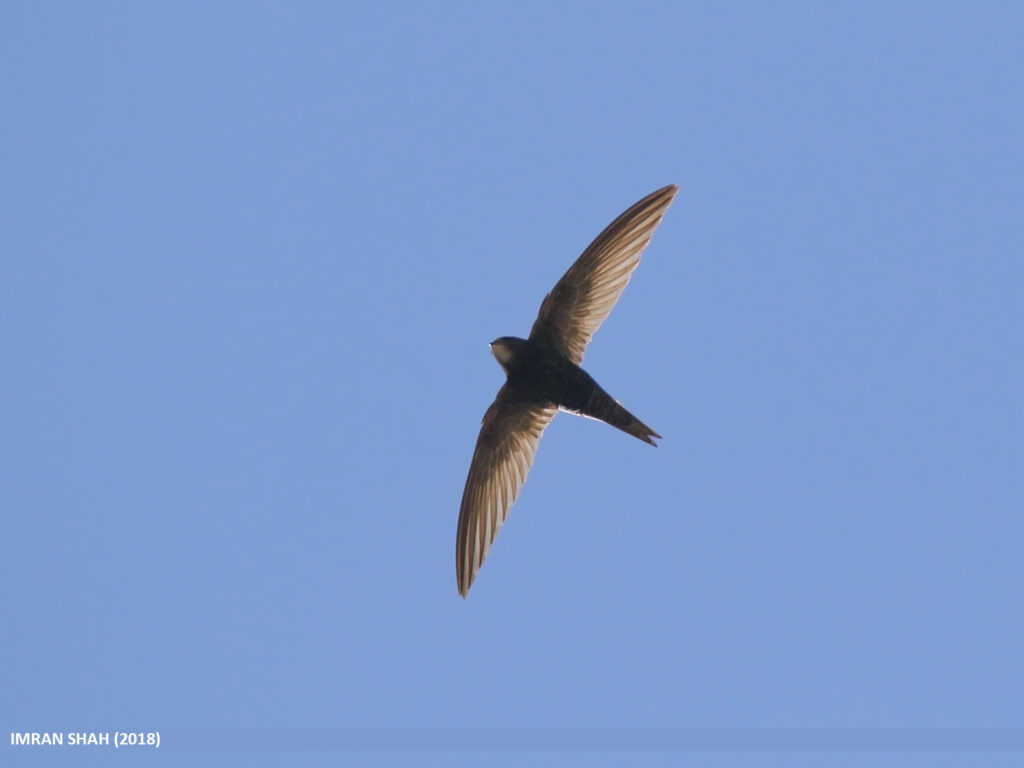
Swifts are amazing birds – they are the longest continually-flying species, spending up to 10 months in the air without landing. They eat, drink, sleep, and mate while flying, only landing to breed. They are almost never seen perching.
Key identification features:
- Crescent-shaped, long, curving wings
- Forked tail which is much shorter and stouter than the tail of a swallow
- Dark brown all over with a small pale patch on their throat, but often appear black against the sky
- Screaming piercing call
When to spot them in the UK: April to September
How to identify swallows
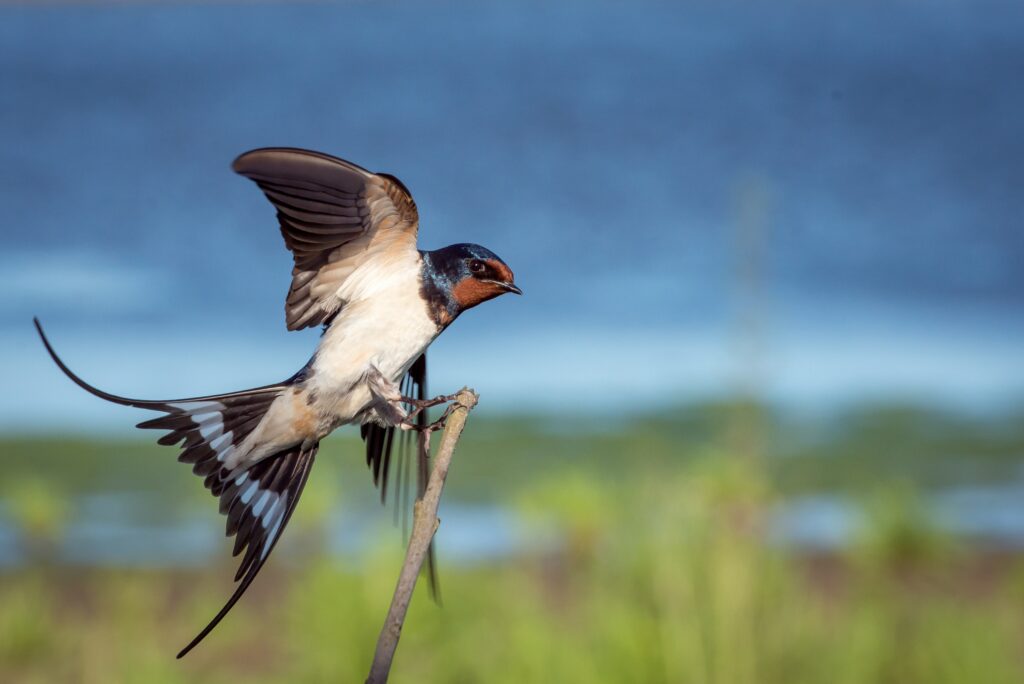
Swallows are small colourful birds. They are known for their agility as they feed on insects while on the wing. They can often be found flying low to the ground over farmland and open pastures, particularly near water where there are lots of insects. In late summer they can be spotted perching together on telephone wires and power lines, readying themselves to migrate to Africa for the winter.
Key identification features:
- Glossy blue upper parts, creamy-white under parts
- Red throat and dark red forehead, but from a distance their whole head may appear dark
- Long forked tail
- They tend to nest in barns, lean-tos and other outbuildings, where they build cup-shaped nests of mud
- Chattering call
- Can be seen perching on telephone wires or wire fencing
When to spot them in the UK: March to October
How to identify house martins
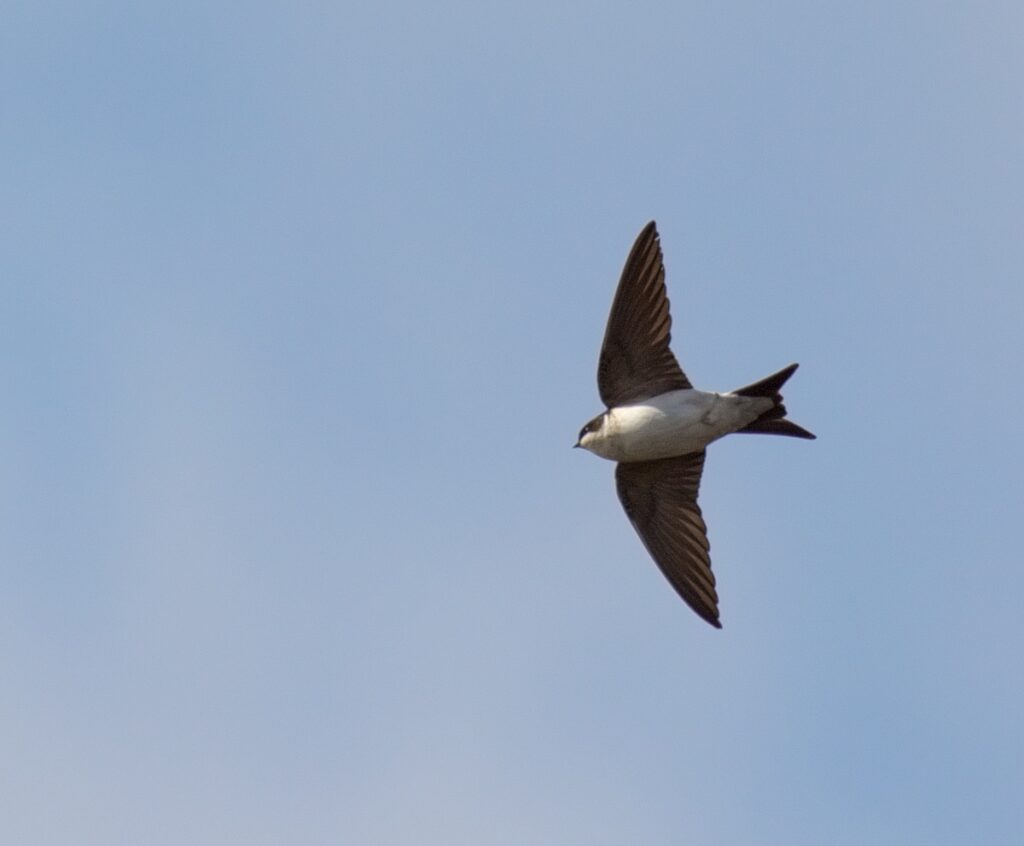
House martins are commonly found in towns and villages, as well as in agricultural areas. They are one of the last of our summer migrants to depart in the autumn. They only eat while on the wing, catching insects as they fly. Their mud cup nests are usually spotted below the eaves of buildings.
Key identification features:
- Small birds with glossy blue-black upper parts and pure white under parts
- Distinctive white rump, short forked tail and white feathers covering its legs and toes
- Shorter wings than swifts or swallows
When to spot them in the UK: April to October
How to identify sand martins
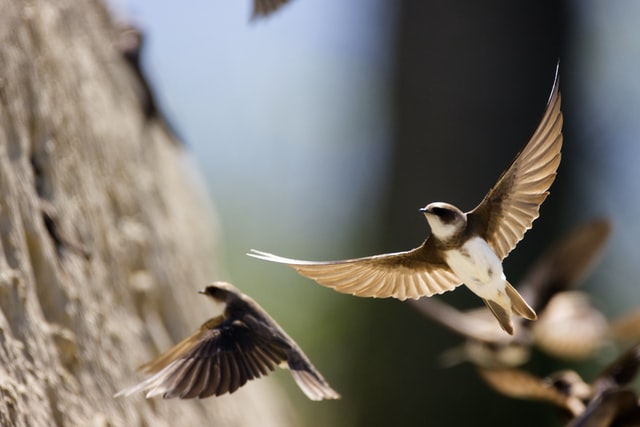
Sand martins are the smallest of all the European hirundines and one of the first spring migrants to appear. They are agile fliers, feeding mainly over water. They breed in colonies of up to 1000 pairs. Unique to sand martins, these birds burrow holes into sandy, dry vertical banks in sand pits, gravel pits, riverbanks, lakes, streams, railway cuttings, and even in drainpipes in walls and holes in brickwork.
Key identification features:
- Dark brown upper parts, with pale tipped feathers. Upper wings, tails and flight feathers are dark brown
- Under parts are white with a distinctive brown band across the breast separating the white throat from the white belly
- Breast band on young sand martins is less visible and their necks and chins are a reddish brown
- Short legs and feet which are dark brown or black
- Short forked tail
- Tend to swirl and flap rather than glide, and can be found mainly over water
When to spot them in the UK: March to October
Recommended reading:
One Midsummer’s Day: Swifts and the Story of Life on Earth
Hardback | June 2023
Flight Paths: How the Mystery of Bird Migration Was Solved
Hardback | April 2023
Swifts a nd Us
nd Us
Paperback | April 2022
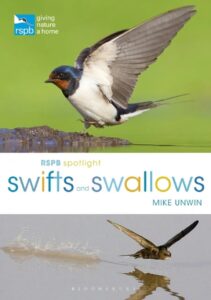 RSPB Spotlight: Swifts and Swallows
RSPB Spotlight: Swifts and Swallows
Paperback | June 2018
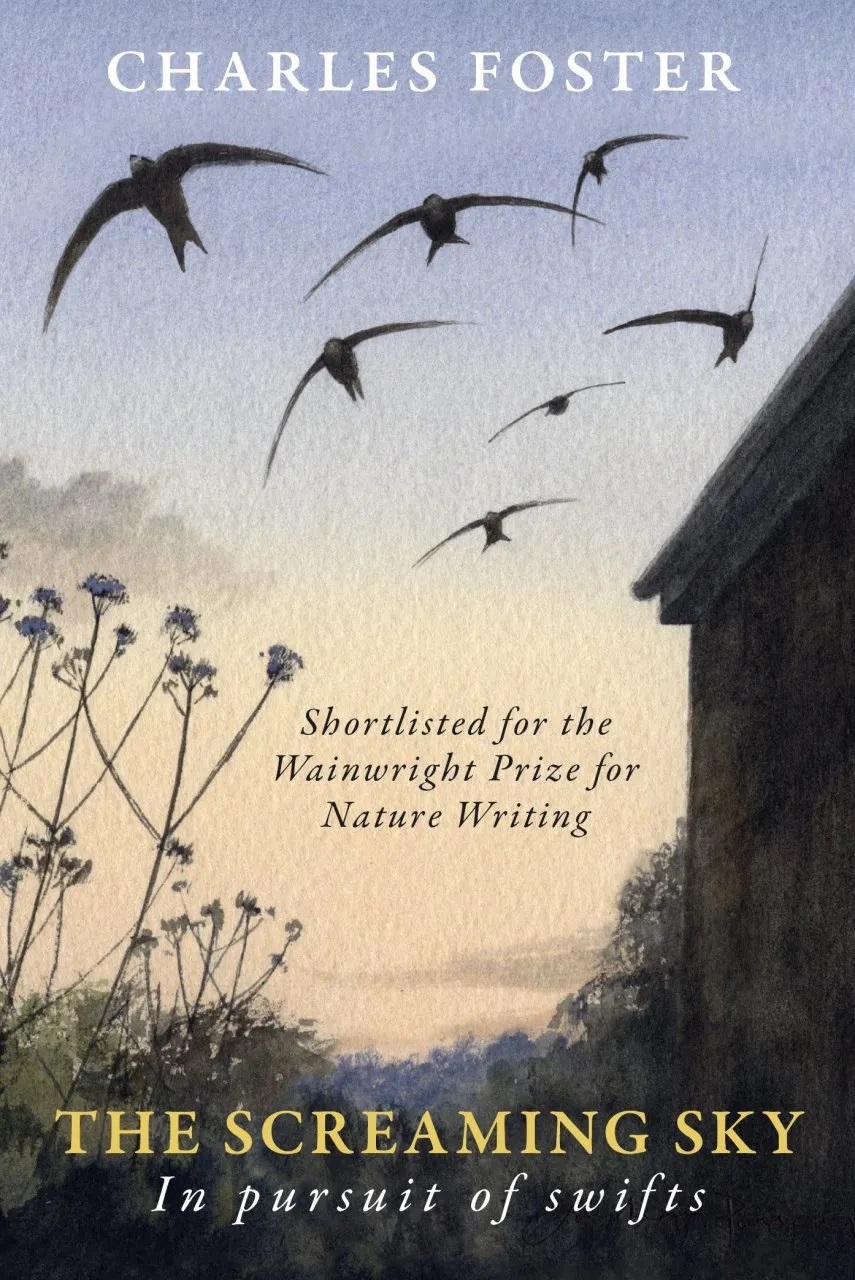 The Screaming Sky: In Pursuits of Swifts
The Screaming Sky: In Pursuits of Swifts
Paperback | April 2022
Collins Bird Guide: The Most Complete Guide to the Birds of Britain and Europe
Paperback | May 2023
 Britain’s Birds: An Identification Guide to the Birds of Great Britain and Ireland
Britain’s Birds: An Identification Guide to the Birds of Great Britain and Ireland
Paperback | May 2020








